Claus Aranha
Evolving Benchmark Functions to Compare Evolutionary Algorithms via Genetic Programming
Mar 21, 2024



Abstract:In this study, we use Genetic Programming (GP) to compose new optimization benchmark functions. Optimization benchmarks have the important role of showing the differences between evolutionary algorithms, making it possible for further analysis and comparisons. We show that the benchmarks generated by GP are able to differentiate algorithms better than human-made benchmark functions. The fitness measure of the GP is the Wasserstein distance of the solutions found by a pair of optimizers. Additionally, we use MAP-Elites to both enhance the search power of the GP and also illustrate how the difference between optimizers changes by various landscape features. Our approach provides a novel way to automate the design of benchmark functions and to compare evolutionary algorithms.
AbCD: A Component-wise Adjustable Framework for Dynamic Optimization Problems
Oct 09, 2023



Abstract:Dynamic Optimization Problems (DOPs) are characterized by changes in the fitness landscape that can occur at any time and are common in real world applications. The main issues to be considered include detecting the change in the fitness landscape and reacting in accord. Over the years, several evolutionary algorithms have been proposed to take into account this characteristic during the optimization process. However, the number of available tools or open source codebases for these approaches is limited, making reproducibility and extensive experimentation difficult. To solve this, we developed a component-oriented framework for DOPs called Adjustable Components for Dynamic Problems (AbCD), inspired by similar works in the Multiobjective static domain. Using this framework, we investigate components that were proposed in several popular DOP algorithms. Our experiments show that the performance of these components depends on the problem and the selected components used in a configuration, which differs from the results reported in the literature. Using irace, we demonstrate how this framework can automatically generate DOP algorithm configurations that take into account the characteristics of the problem to be solved. Our results highlight existing problems in the DOP field that need to be addressed in the future development of algorithms and components.
Multiobjective Evolutionary Component Effect on Algorithm behavior
Jul 31, 2023



Abstract:The performance of multiobjective evolutionary algorithms (MOEAs) varies across problems, making it hard to develop new algorithms or apply existing ones to new problems. To simplify the development and application of new multiobjective algorithms, there has been an increasing interest in their automatic design from their components. These automatically designed metaheuristics can outperform their human-developed counterparts. However, it is still unknown what are the most influential components that lead to performance improvements. This study specifies a new methodology to investigate the effects of the final configuration of an automatically designed algorithm. We apply this methodology to a tuned Multiobjective Evolutionary Algorithm based on Decomposition (MOEA/D) designed by the iterated racing (irace) configuration package on constrained problems of 3 groups: (1) analytical real-world problems, (2) analytical artificial problems and (3) simulated real-world. We then compare the impact of the algorithm components in terms of their Search Trajectory Networks (STNs), the diversity of the population, and the anytime hypervolume values. Looking at the objective space behavior, the MOEAs studied converged before half of the search to generally good HV values in the analytical artificial problems and the analytical real-world problems. For the simulated problems, the HV values are still improving at the end of the run. In terms of decision space behavior, we see a diverse set of the trajectories of the STNs in the analytical artificial problems. These trajectories are more similar and frequently reach optimal solutions in the other problems.
Co-evolving morphology and control of soft robots using a single genome
Dec 22, 2022



Abstract:When simulating soft robots, both their morphology and their controllers play important roles in task performance. This paper introduces a new method to co-evolve these two components in the same process. We do that by using the hyperNEAT algorithm to generate two separate neural networks in one pass, one responsible for the design of the robot body structure and the other for the control of the robot. The key difference between our method and most existing approaches is that it does not treat the development of the morphology and the controller as separate processes. Similar to nature, our method derives both the "brain" and the "body" of an agent from a single genome and develops them together. While our approach is more realistic and doesn't require an arbitrary separation of processes during evolution, it also makes the problem more complex because the search space for this single genome becomes larger and any mutation to the genome affects "brain" and the "body" at the same time. Additionally, we present a new speciation function that takes into consideration both the genotypic distance, as is the standard for NEAT, and the similarity between robot bodies. By using this function, agents with very different bodies are more likely to be in different species, this allows robots with different morphologies to have more specialized controllers since they won't crossover with other robots that are too different from them. We evaluate the presented methods on four tasks and observe that even if the search space was larger, having a single genome makes the evolution process converge faster when compared to having separated genomes for body and control. The agents in our population also show morphologies with a high degree of regularity and controllers capable of coordinating the voxels to produce the necessary movements.
Knowledge-Driven Program Synthesis via Adaptive Replacement Mutation and Auto-constructed Subprogram Archives
Sep 08, 2022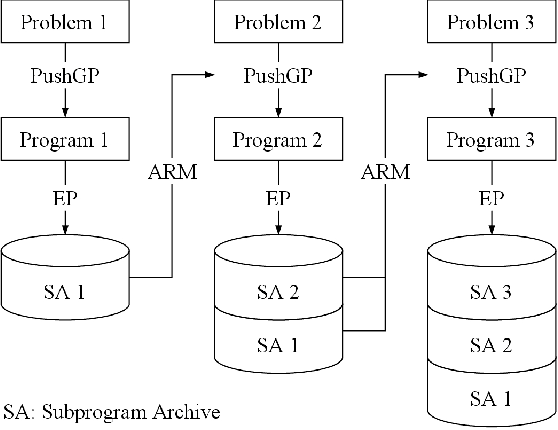



Abstract:We introduce Knowledge-Driven Program Synthesis (KDPS) as a variant of the program synthesis task that requires the agent to solve a sequence of program synthesis problems. In KDPS, the agent should use knowledge from the earlier problems to solve the later ones. We propose a novel method based on PushGP to solve the KDPS problem, which takes subprograms as knowledge. The proposed method extracts subprograms from the solution of previously solved problems by the Even Partitioning (EP) method and uses these subprograms to solve the upcoming programming task using Adaptive Replacement Mutation (ARM). We call this method PushGP+EP+ARM. With PushGP+EP+ARM, no human effort is required in the knowledge extraction and utilization processes. We compare the proposed method with PushGP, as well as a method using subprograms manually extracted by a human. Our PushGP+EP+ARM achieves better train error, success count, and faster convergence than PushGP. Additionally, we demonstrate the superiority of PushGP+EP+ARM when consecutively solving a sequence of six program synthesis problems.
A Novel Weighted Ensemble Learning Based Agent for the Werewolf Game
May 19, 2022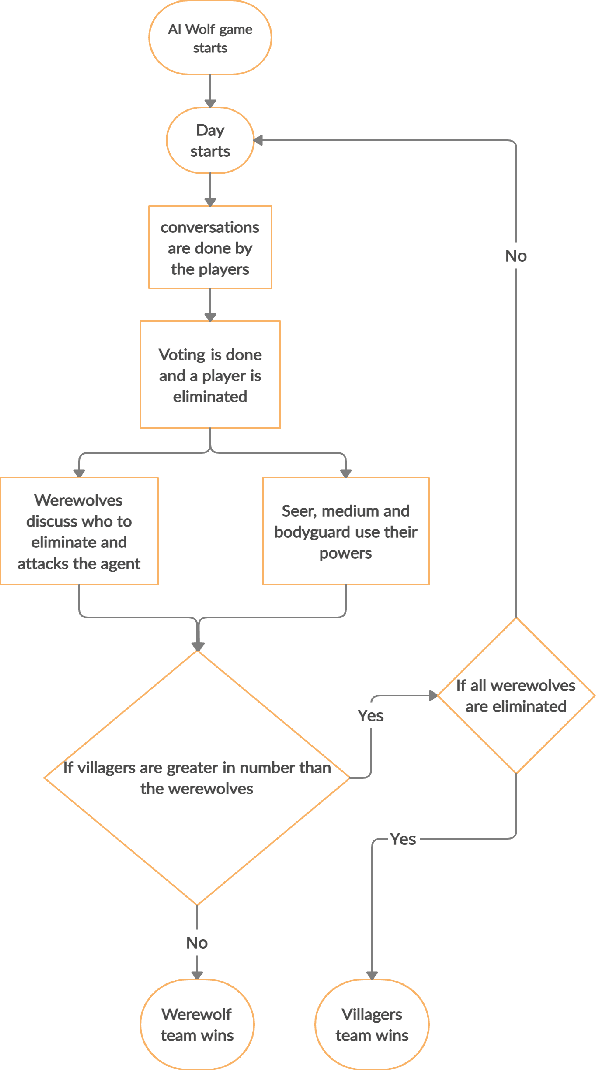
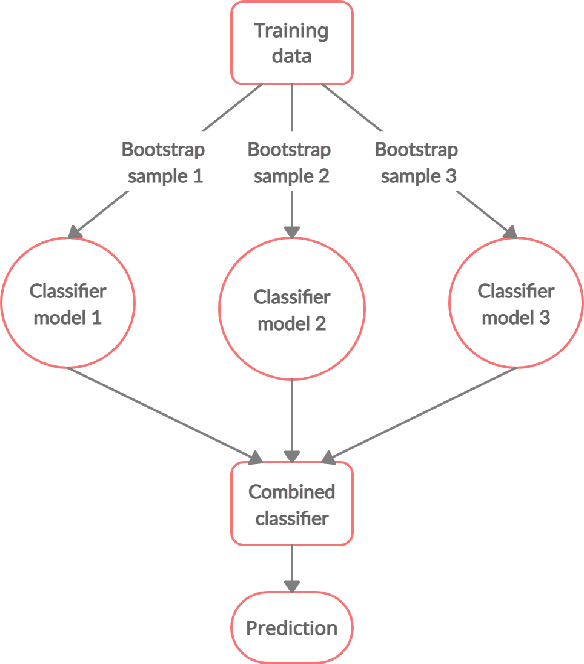
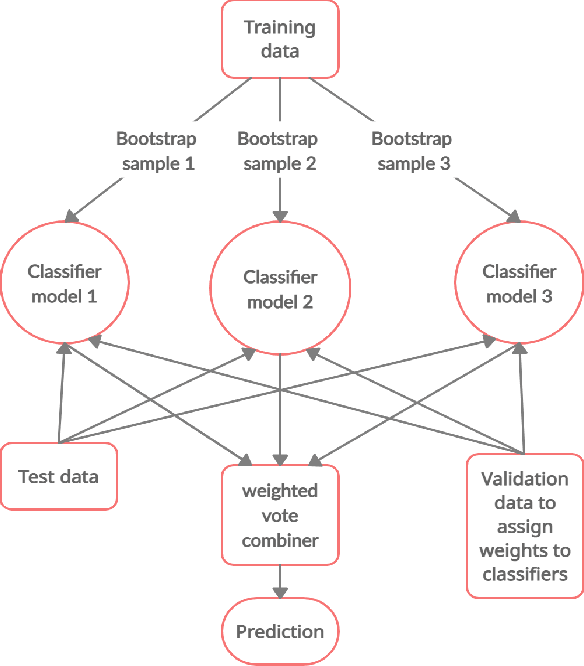
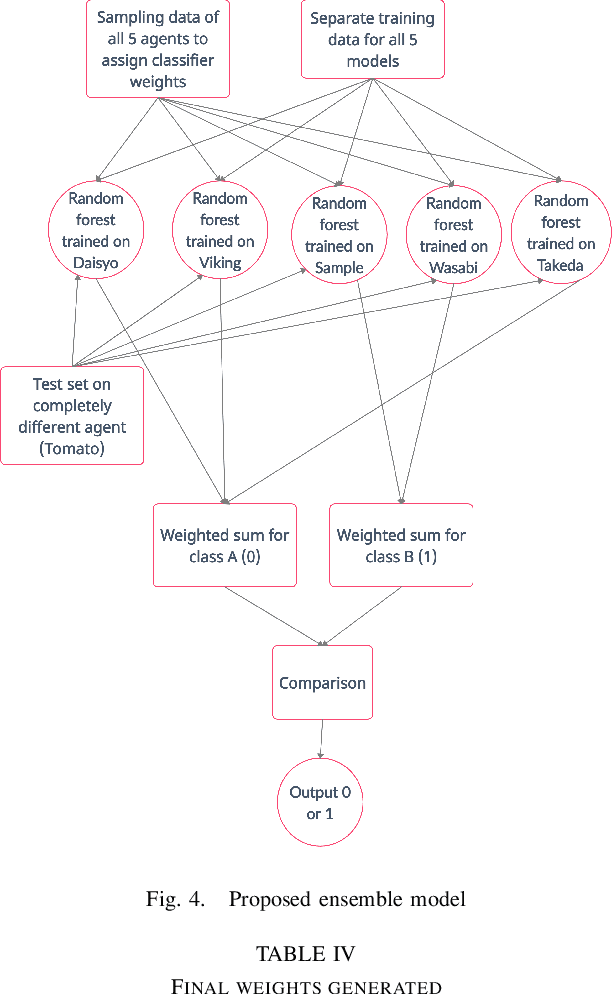
Abstract:Werewolf is a popular party game throughout the world, and research on its significance has progressed in recent years. The Werewolf game is based on conversation, and in order to win, participants must use all of their cognitive abilities. This communication game requires the playing agents to be very sophisticated to win. In this research, we generated a sophisticated agent to play the Werewolf game using a complex weighted ensemble learning approach. This research work aimed to estimate what other agents/players think of us in the game. The agent was developed by aggregating strategies of different participants in the AI Wolf competition and thereby learning from them using machine learning. Moreover, the agent created was able to perform much better than other competitors using very basic strategies to show the approach's effectiveness in the Werewolf game. The machine learning technique used here is not restricted to the Werewolf game but may be extended to any game that requires communication and action depending on other participants.
Component-wise Analysis of Automatically Designed Multiobjective Algorithms on Constrained Problems
Apr 10, 2022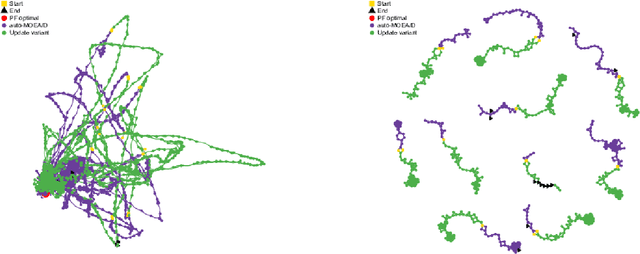
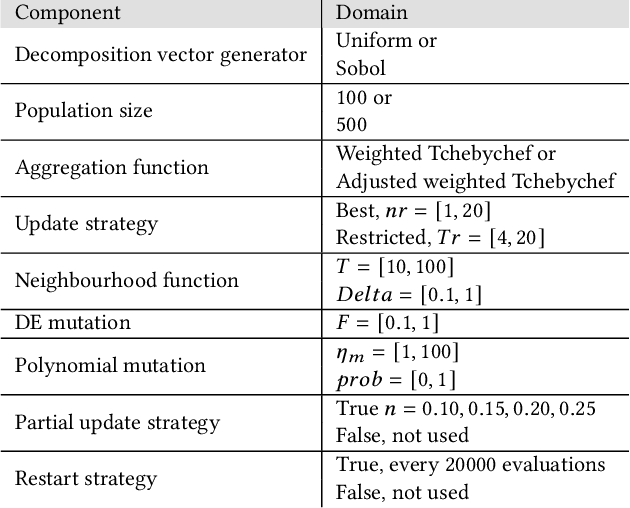
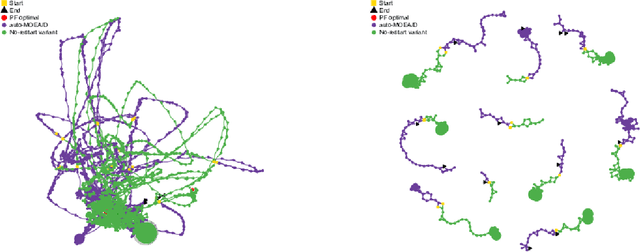

Abstract:The performance of multiobjective algorithms varies across problems, making it hard to develop new algorithms or apply existing ones to new problems. To simplify the development and application of new multiobjective algorithms, there has been an increasing interest in their automatic design from component parts. These automatically designed metaheuristics can outperform their human-developed counterparts. However, it is still uncertain what are the most influential components leading to their performance improvement. This study introduces a new methodology to investigate the effects of the final configuration of an automatically designed algorithm. We apply this methodology to a well-performing Multiobjective Evolutionary Algorithm Based on Decomposition (MOEA/D) designed by the irace package on nine constrained problems. We then contrast the impact of the algorithm components in terms of their Search Trajectory Networks (STNs), the diversity of the population, and the hypervolume. Our results indicate that the most influential components were the restart and update strategies, with higher increments in performance and more distinct metric values. Also, their relative influence depends on the problem difficulty: not using the restart strategy was more influential in problems where MOEA/D performs better; while the update strategy was more influential in problems where MOEA/D performs the worst.
Search Trajectories Networks of Multiobjective Evolutionary Algorithms
Jan 27, 2022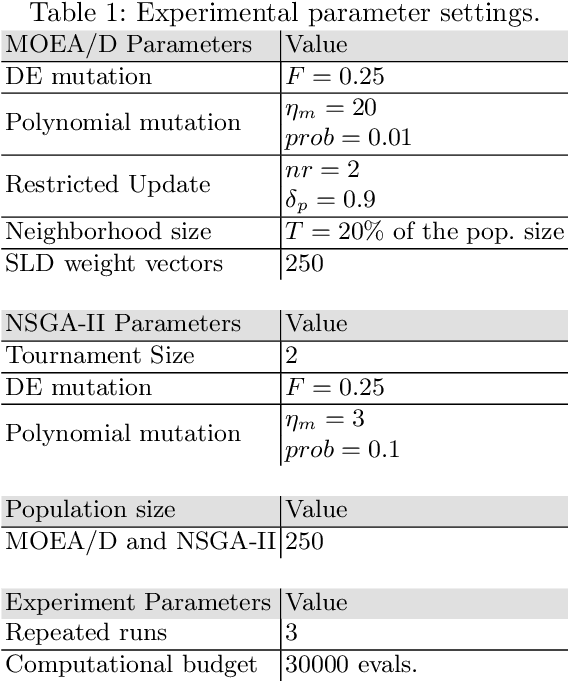
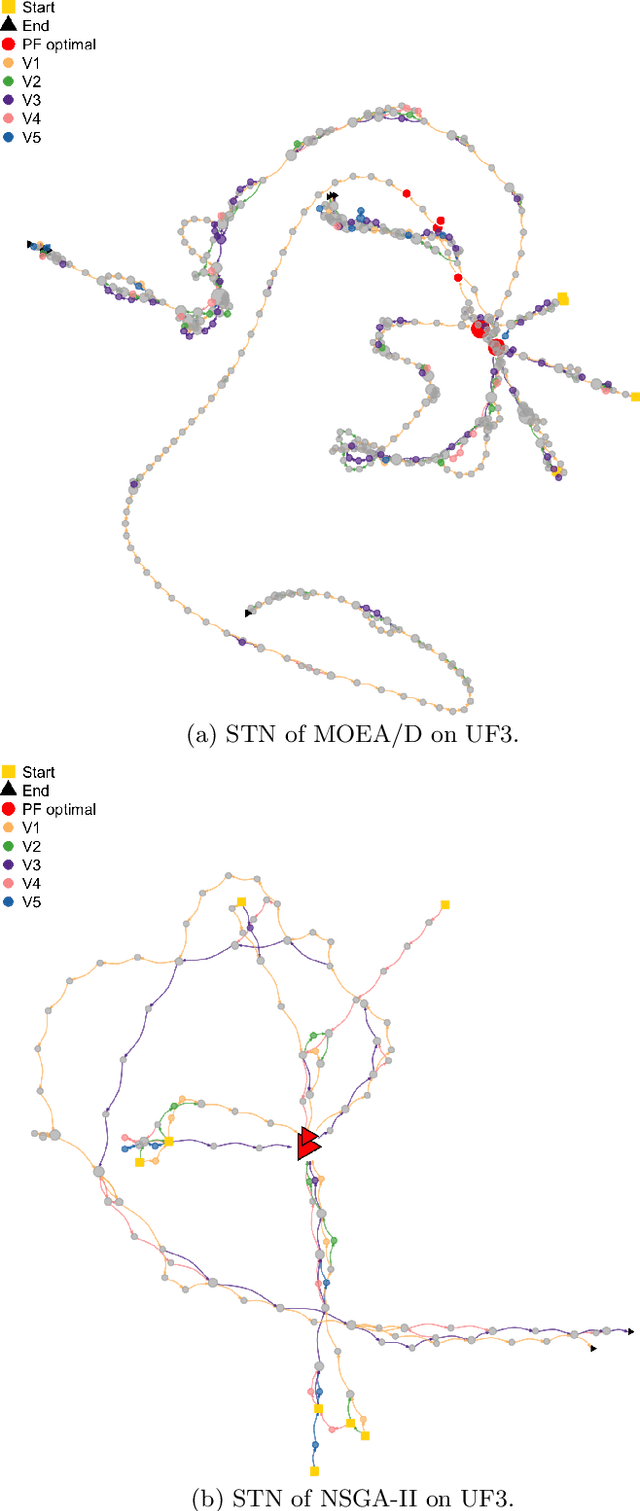

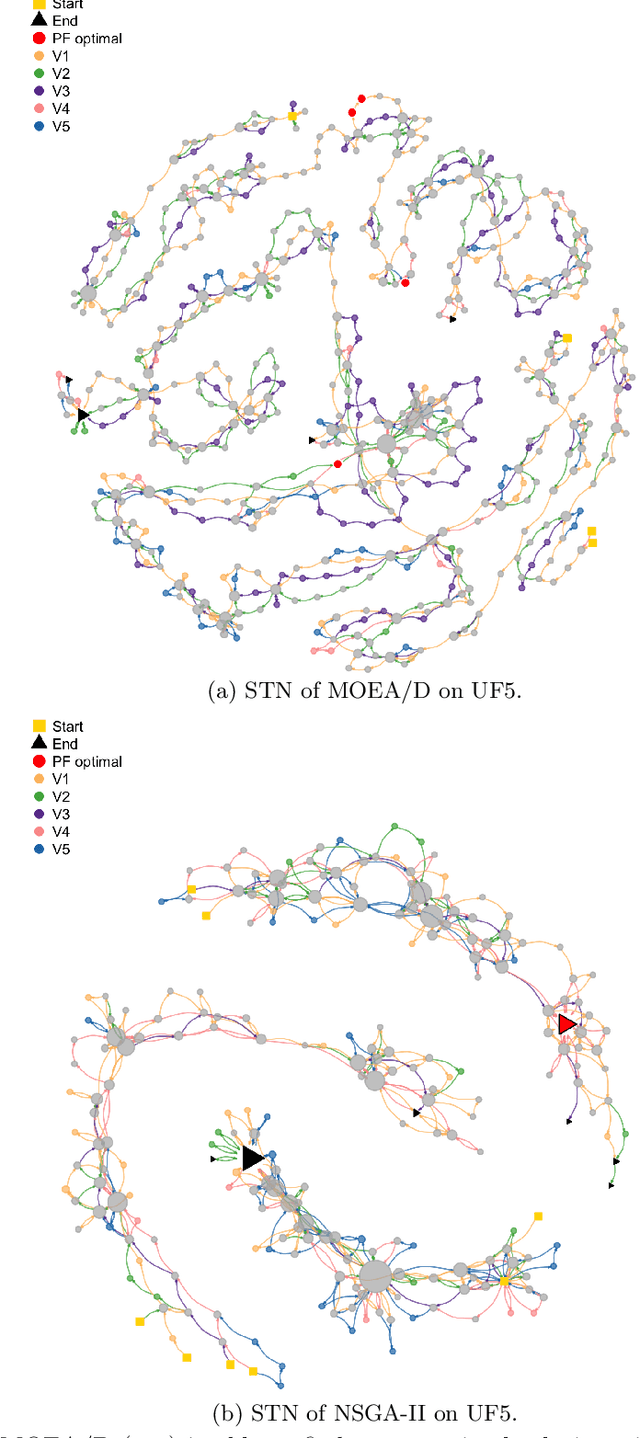
Abstract:Understanding the search dynamics of multiobjective evolutionary algorithms (MOEAs) is still an open problem. This paper extends a recent network-based tool, search trajectory networks (STNs), to model the behavior of MOEAs. Our approach uses the idea of decomposition, where a multiobjective problem is transformed into several single-objective problems. We show that STNs can be used to model and distinguish the search behavior of two popular multiobjective algorithms, MOEA/D and NSGA-II, using 10 continuous benchmark problems with 2 and 3 objectives. Our findings suggest that we can improve our understanding of MOEAs using STNs for algorithm analysis.
Faster Convergence in Multi-Objective Optimization Algorithms Based on Decomposition
Dec 21, 2021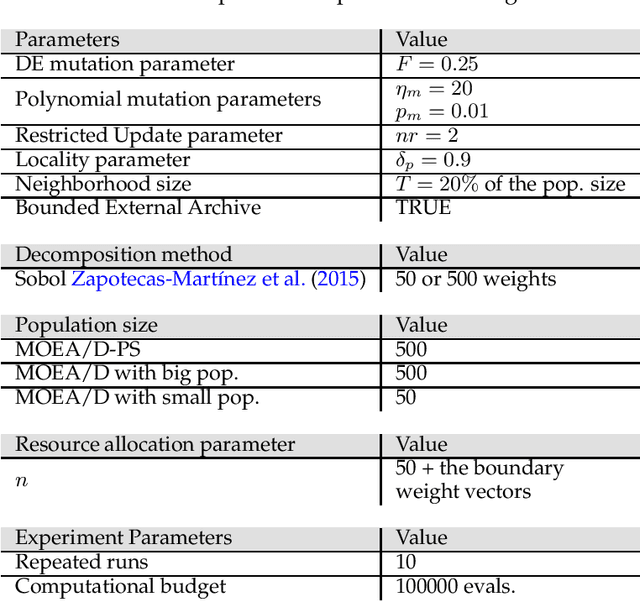
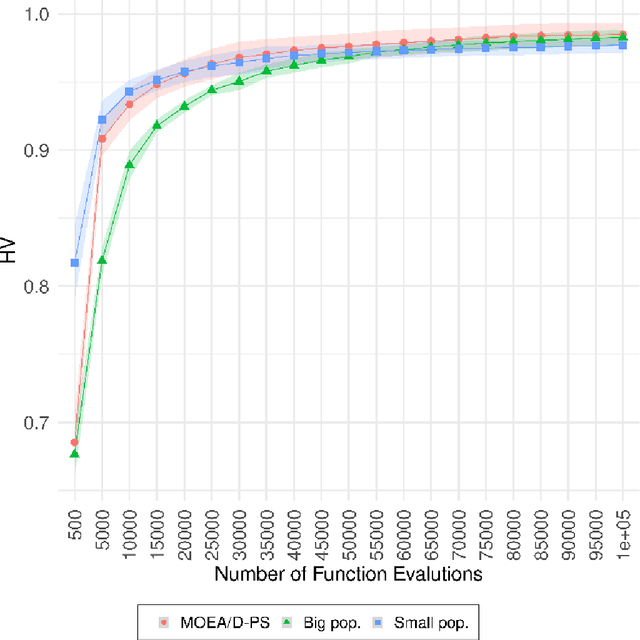
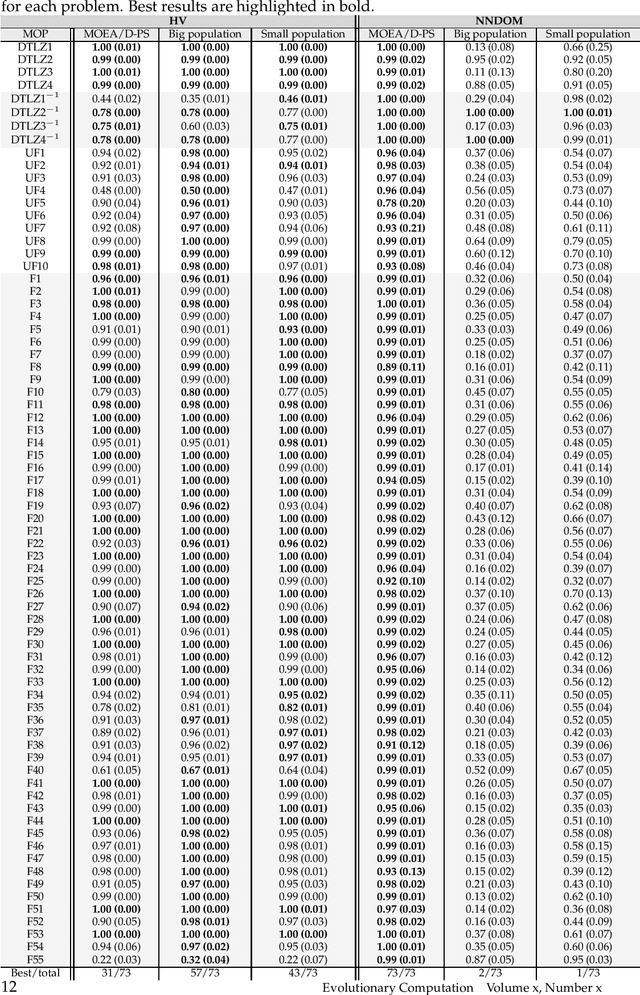
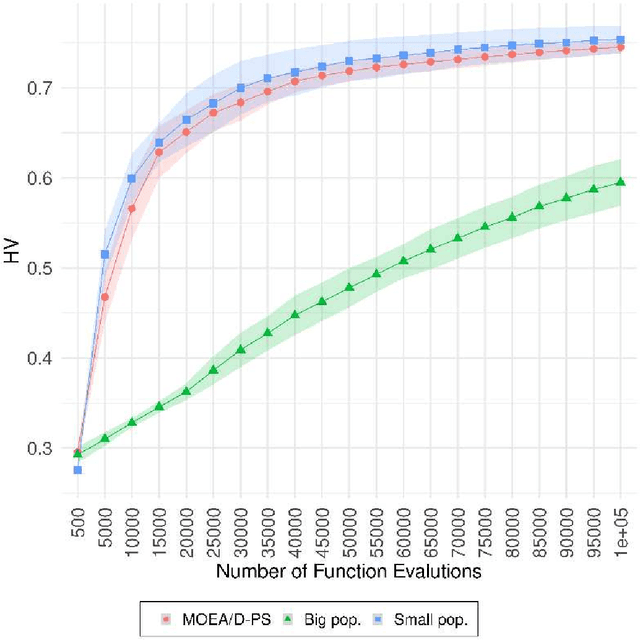
Abstract:The Resource Allocation approach (RA) improves the performance of MOEA/D by maintaining a big population and updating few solutions each generation. However, most of the studies on RA generally focused on the properties of different Resource Allocation metrics. Thus, it is still uncertain what the main factors are that lead to increments in performance of MOEA/D with RA. This study investigates the effects of MOEA/D with the Partial Update Strategy in an extensive set of MOPs to generate insights into correspondences of MOEA/D with the Partial Update and MOEA/D with small population size and big population size. Our work undertakes an in-depth analysis of the populational dynamics behaviour considering their final approximation Pareto sets, anytime hypervolume performance, attained regions and number of unique non-dominated solutions. Our results indicate that MOEA/D with Partial Update progresses with the search as fast as MOEA/D with small population size and explores the search space as MOEA/D with big population size. MOEA/D with Partial Update can mitigate common problems related to population size choice with better convergence speed in most MOPs, as shown by the results of hypervolume and number of unique non-dominated solutions, the anytime performance and Empirical Attainment Function indicates.
MOEA/D with Adaptative Number of Weight Vectors
Sep 13, 2021
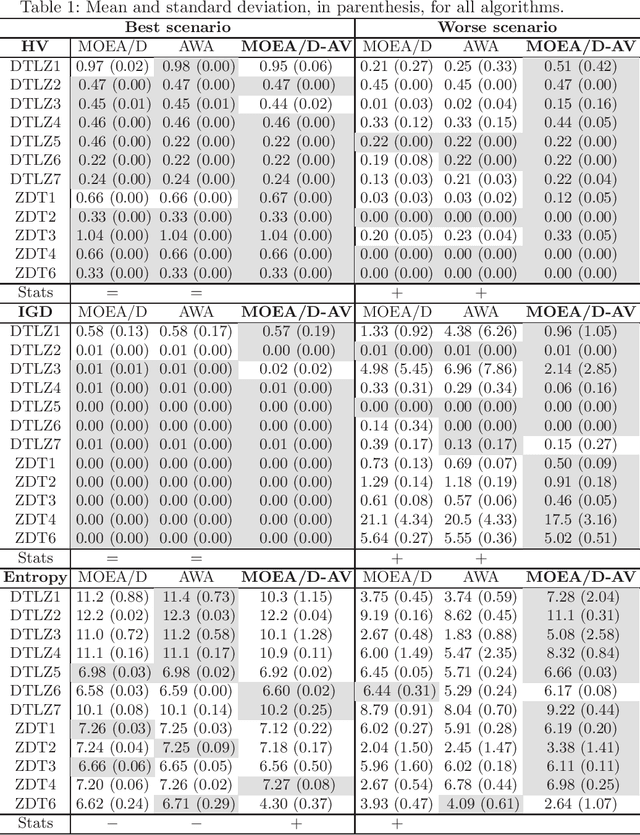

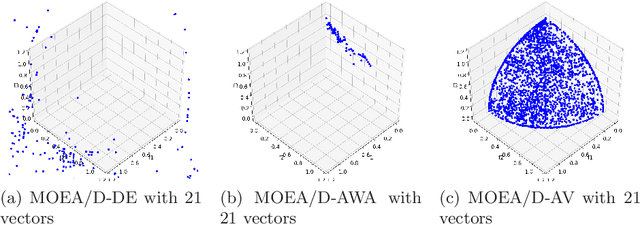
Abstract:The Multi-Objective Evolutionary Algorithm based on Decomposition (MOEA/D) is a popular algorithm for solving Multi-Objective Problems (MOPs). The main component of MOEA/D is to decompose a MOP into easier sub-problems using a set of weight vectors. The choice of the number of weight vectors significantly impacts the performance of MOEA/D. However, the right choice for this number varies, given different MOPs and search stages. Here we adaptively change the number of vectors by removing unnecessary vectors and adding new ones in empty areas of the objective space. Our MOEA/D variant uses the Consolidation Ratio to decide when to change the number of vectors, and then it decides where to add or remove these weighted vectors. We investigate the effects of this adaptive MOEA/D against MOEA/D with a poorly chosen set of vectors, a MOEA/D with fine-tuned vectors and MOEA/D-AWA on the DTLZ and ZDT benchmark functions. We analyse the algorithms in terms of hypervolume, IGD and entropy performance. Our results show that the proposed method is equivalent to MOEA/D with fine-tuned vectors and superior to MOEA/D with poorly defined vectors. Thus, our adaptive mechanism mitigates problems related to the choice of the number of weight vectors in MOEA/D, increasing the final performance of MOEA/D by filling empty areas of the objective space while avoiding premature stagnation of the search progress.
 Add to Chrome
Add to Chrome Add to Firefox
Add to Firefox Add to Edge
Add to Edge